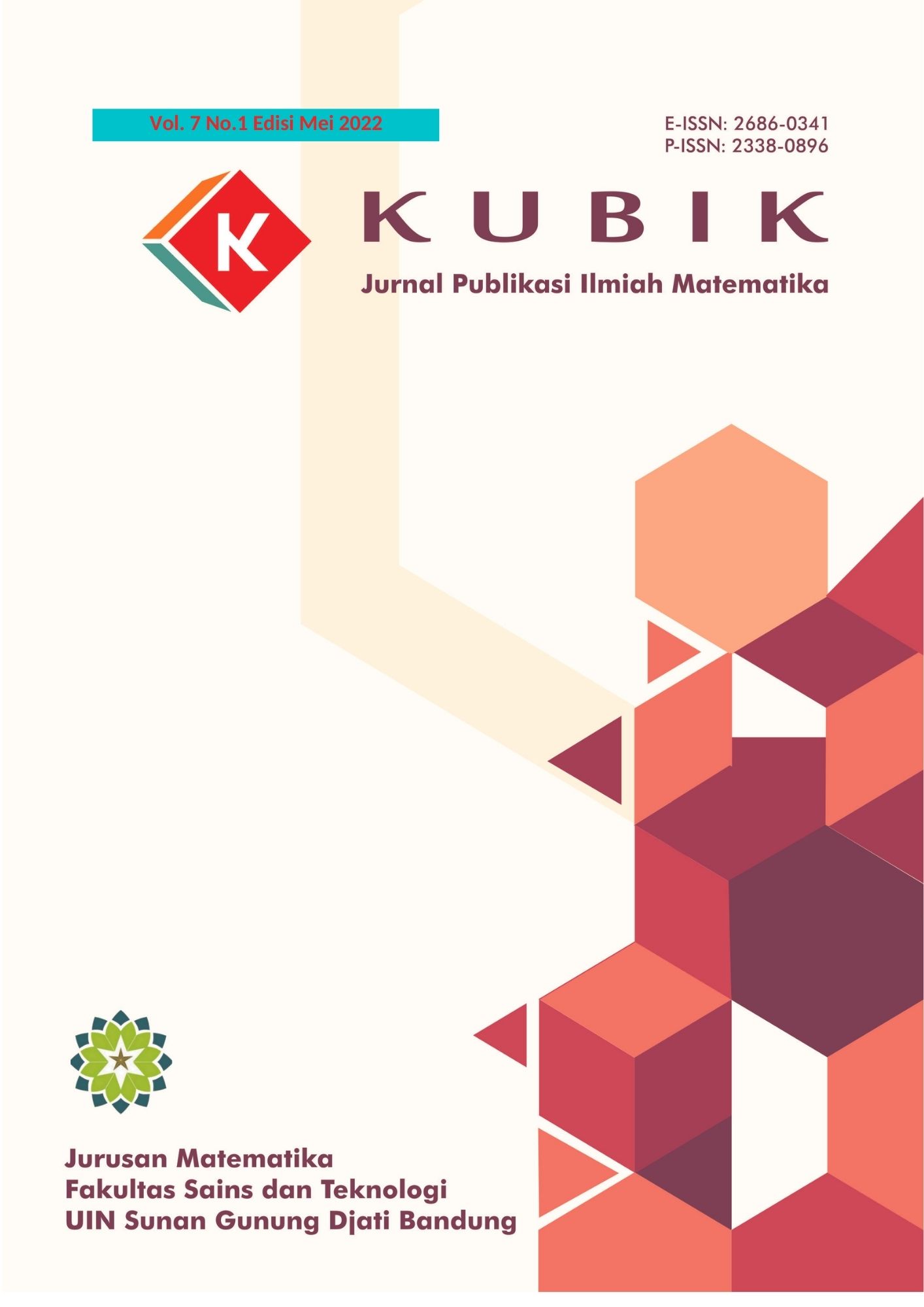Analisis Faktor-Faktor yang Mempengaruhi Risiko Gagal Bayar Debitur pada Lembaga Keuangan Mikro Menggunakan Regresi Logistik dan Ant Coloni Optimization (ACO)
DOI:
https://doi.org/10.15575/kubik.v7i1.13836Keywords:
Lembaga Keuangan Mikro, risiko gagal bayar, faktor risiko debitur, model regresi logistik, Ant Coloni Optimization (ACO).Abstract
Salah satu peranan langsung Lembaga Keuangan Mikro (LKM) terhadap industri kecil dan mikro adalah memberikan dana pinjaman berupa kredit kepada nasabah yang membutuhkan. Dalam hal ini nasabah LKM dapat mengajukan kredit dengan memenuhi persyaratan dari LKM lalu kredit didapatkan jika LKM menyetujui kesepakatan pinjaman. Dalam proses pemberian kredit yang dilakukan oleh LKM sering dihadapkan pada suatu risiko yang dikenal sebagai risiko kredit bermasalah (problem loans). Berdasarkan risiko gagal bayar tersebut, paper ini bertujuan untuk melakukan analisis faktor-faktor yang mempengaruhi risiko gagal bayar dari calon debitur. Metode yang digunakan adalah regresi logistic dan Ant Coloni Optimization (ACO). Terdapat beberapa tahap dalam penelitian ini: (1) melakukan standarisasi data pada data faktor risiko calon debitur, (2) menetapkan asumsi model regresi logistic, (3) melakukan estimasi parameter model regresi logistik menggunakan algoritma Ant Coloni Optimization (ACO), dan (4) melakukan uji signifikansi setiap variabel. Dalam paper ini, data yang digunakan adalah data historis debitur pada LKM di Bandung, Indonesia. Hasilnya menunjukkan bahwa lima faktor yang dianalisis berpengaruh signifikan terhadap risiko gagal bayar, yaitu usia, jumlah tanggungan keluarga, nilai jaminan, besarnya kredit yang diajukan, dan jangka waktu pengembalian kredit. dengan kekuatan korelasi sebesar 93.5%. Menggunakan lima factor ini, yang digunakan untuk menentukan probabilitas gagal bayar dari calon debitur. Probabilitas risiko gagal bayar calon debitur ini, sangat berguna bagi LKM guna menentukan klasifikasi faktor kelayakan pemberian kredit berdasarkan predikat risiko calon debitur. Demikian sehingga, LKM dapat mengetahui faktor-faktor risiko gagal bayar dan mengambil keputusan pemberian kredit yang layak atau tidak layak.
Â
References
M. A. Sila, “Lembaga keuangan mikro dan pengentasan kemiskinan: kasus lumbung pitih nagari di Padang,†Masy. J. Sosiol., pp. 1–19, 2014.
S. Purnama and A. P. Kusumawardhani, “Deteksi Peluang Gagal Bayar Calon Debitur Menggunakan Algoritma Particle Swarm Optimization (PSO) untuk Meningkatkan Kinerja Manajemen Risiko pada Koperasi Simpan Pinjam ABC,†KUBIK J. Publ. Ilm. Mat., vol. 6, no. 2, pp. 71–84, 2021.
D. Damayanti, “Peran Lembaga Keuangan Mikro Terhadap Eksistensi Usaha Mikro (Studi Pada Nasabah PD BPR BANK Sleman),†Mak. J. Manaj., vol. 5, no. 2, pp. 110–118, 2019.
R. F. Malik and H. Hermawan, “Credit scoring using classification and regression tree (CART) algorithm and binary particle swarm optimization,†Int. J. Electr. Comput. Eng., vol. 8, no. 6, p. 5425, 2018.
A. Blanco, R. Pino-MejÃas, J. Lara, and S. Rayo, “Credit scoring models for the microfinance industry using neural networks: Evidence from Peru,†Expert Syst. Appl., vol. 40, no. 1, pp. 356–364, 2013.
S. Razzaki et al., “A comparative study of artificial intelligence and human doctors for the purpose of triage and diagnosis,†arXiv Prepr. arXiv1806.10698, 2018.
O. I. Abiodun, A. Jantan, A. E. Omolara, K. V. Dada, N. A. Mohamed, and H. Arshad, “State-of-the-art in artificial neural network applications: A survey,†Heliyon, vol. 4, no. 11, pp. 1-41, 2018.
B. O. Nyangena, “Consumer credit risk modelling using machine learning algorithms: a comparative approach.†Strathmore University, 2019.
X. Ma and S. Lv, “Financial credit risk prediction in internet finance driven by machine learning,†Neural Comput. Appl., vol. 31, no. 12, pp. 8359–8367, 2019.
F. Shen, R. Wang, and Y. Shen, “A cost-sensitive logistic regression credit scoring model based on multi-objective optimization approach,†Technol. Econ. Dev. Econ., vol. 26, no. 2, pp. 405–429, 2020.
K. Ben Addi and N. Souissi, “An Ontology-Based Model for Credit Scoring Knowledge in Microfinance: Towards a Better Decision Making,†in 2020 IEEE 10th International Conference on Intelligent Systems (IS), 2020, pp. 380–385.
K. O. Dao, T. Y. Nguyen, S. Hussain, and V. C. Nguyen, “Factors affecting non-performing loans of commercial banks: The role of bank performance and credit growth,†Center for Open Science, 2020.
R. Panigrahi, S. Borah, N. Day, R. Babo, and A. S. Ashour, “Classification and analysis of facebook metrics dataset using supervised classifiers,†Soc. Netw. Anal. Comput. Res. Methods Tech., vol. 1, 2018.
M. R. C. Acosta, S. Ahmed, C. E. Garcia, and I. Koo, “Extremely randomized trees-based scheme for stealthy cyber-attack detection in smart grid networks,†IEEE access, vol. 8, pp. 19921–19933, 2020.
D. W. Hosmer Jr, S. Lemeshow, and R. X. Sturdivant, Applied logistic regression, vol. 398. John Wiley & Sons, 2013.
P. D. Allison, Logistic regression using SAS: Theory and application. SAS institute, 2012.
A. S. Sukono, M. Mamat, and K. Prafidya, “Credit scoring for cooperative of financial services using logistic regression estimated by genetic algorithm,†Appl. Math. Sci., vol. 8, no. 1, pp. 45–57, 2014.
Q. D. Buchlak et al., “Machine learning applications to clinical decision support in neurosurgery: an artificial intelligence augmented systematic review,†Neurosurg. Rev., vol. 43, no. 5, pp. 1235–1253, 2020.
E.-A. Costea, “Machine learning-based natural language processing algorithms and electronic health records data,†Linguist. Philos. Investig., vol. 19, pp. 93–99, 2020.
M. Dorigo and T. Stützle, “Ant colony optimization: overview and recent advances,†Handb. metaheuristics, pp. 311–351, 2019.
J. Uthayakumar, N. Metawa, K. Shankar, and S. K. Lakshmanaprabu, “Financial crisis prediction model using ant colony optimization,†Int. J. Inf. Manage., vol. 50, pp. 538–556, 2020.
H. Peng, C. Ying, S. Tan, B. Hu, and Z. Sun, “An improved feature selection algorithm based on ant colony optimization,†IEEE Access, vol. 6, pp. 69203–69209, 2018.
Y. Khourdifi and M. Bahaj, “Heart disease prediction and classification using machine learning algorithms optimized by particle swarm optimization and ant colony optimization,†Int. J. Intell. Eng. Syst., vol. 12, no. 1, pp. 242–252, 2019.
A. Runka, “Evolving an edge selection formula for ant colony optimization,†in Proceedings of the 11th Annual conference on Genetic and evolutionary computation, 2009, pp. 1075–1082.
N. B. Nawai and M. N. B. M. Shariff, “Determinants of repayment performance in microfinance programs in Malaysia,†Labu. Bull. Int. Bus. Financ., pp. 14–29, 2013.
F. Barboza, H. Kimura, and E. Altman, “Machine learning models and bankruptcy prediction,†Expert Syst. Appl., vol. 83, pp. 405–417, 2017.
Downloads
Published
How to Cite
Issue
Section
Citation Check
License
Authors who publish in KUBIK: Jurnal Publikasi Ilmiah Matematika agree to the following terms:
- Authors retain copyright and grant the journal right of first publication with the work simultaneously licensed under a Attribution-ShareAlike 4.0 International (CC BY-SA 4.0) License that allows others to share the work with an acknowledgment of the work's authorship and initial publication in this journal.
- Authors are able to enter into separate, additional contractual arrangements for the non-exclusive distribution of the journal's published version of the work (e.g., post it to an institutional repository or publish it in a book), with an acknowledgment of its initial publication in this journal.
- Authors are permitted and encouraged to post their work online (e.g., in institutional repositories or on their website) prior to and during the submission process, as it can lead to productive exchanges, as well as earlier and greater citation of published work (See The Effect of Open Access).
Â









